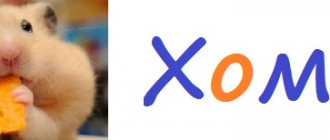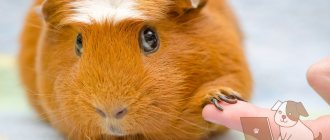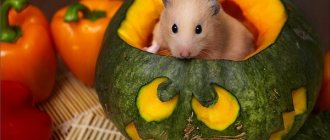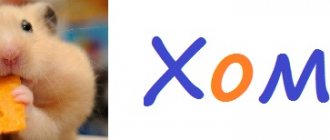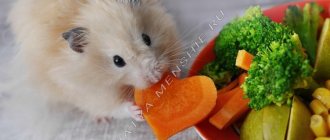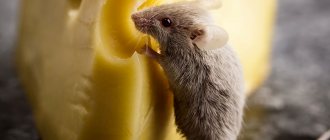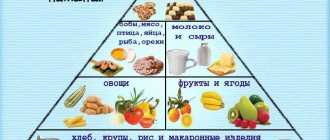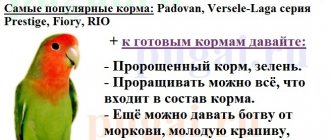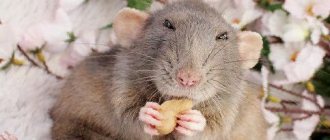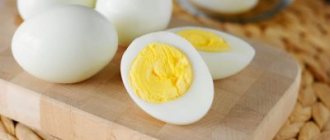- home
- Parrot
- Feeding
05/11/2019 The menu for a pet parrot should be balanced and varied - you should not feed the bird the same set of products. Not only fruits and vegetables, but also grains allow you to diversify your feathered pet’s diet. Millet is considered the most valuable for the bird's body. But is it possible to give parrots millet? As you know, this cereal is made from millet, but does this grain lose its beneficial properties during processing? Answers to frequently asked questions when creating a menu for a parrot are given in the article.
How to choose
By all rights, most of the poultry mix - 60% - is grain. It must be chosen carefully. Is there any raw millet for parrots and what is the best way to feed them? We will tell you below.
Each grain must have the correct round shape. The color is light yellow, the surface is glossy. The taste of such porridge should have a sweetish aftertaste.
For information! Chopped gray porridge with impurities is not suitable for feeding parrots. Peeled and shelled, they quickly oxidize, and birds simply do not accept them.
The benefits and harms of millet porridge for parrots
It is important that it is not recommended to give wheat porridge to parrots in its raw form. Sprouted grains or porridge will do. If you love a feathered pet, then there is no need to limit it.
The benefits of millet for pet parrots
Can I give my pet millet in unlimited quantities or should I replace it with other grains? An excessive amount of this grain in the diet of birds is undesirable: the carbohydrate product can cause obesity in the bird.
Harm of millet for parrots
If birds cannot tolerate this type of cereal, they can be fed to parrots.
What other grains can be given to parrots?
When it comes to what grains budgies can eat, there is a wide choice. But it is recommended to give the bird approved cereals not individually, but in the form of a mixture. In addition to millet and millet, it is advisable to include oats in the parrot's menu - in the form of steamed cereal or oatmeal. It is also recommended to feed the bird:
The listed cereals should be boiled before serving to your pet. Each of these porridges contains many useful substances and, therefore, will bring great benefits to the body of your feathered pet. Barley has a cleansing effect, rice is indispensable for maintaining a bird’s normal body weight, and buckwheat has a beneficial effect on both the bird’s general health and its appearance.
Millet is one of the most popular and widespread feeds for small varieties of parrots and young animals. It includes many useful microelements and vital substances for birds. It is important to give it to your parrot not raw, but cooked.
Sprouted millet: benefits and harm for parrots
Experienced owners of feathered pets have heard about the benefits of sprouted grains for their birds. But few people know whether it is possible to serve germinating millet to a beloved parrot.
How to cook
For a complete healthy product, the grain is washed and soaked in warm water for half a day. Then spread the cheesecloth on a saucer and spread the cereal in one layer. Place the dish in a warm, bright place for 7 days. After this period, sprouts will appear, the most useful ones being 6 mm long.
Chopped millet is fed to the parrot along with the main food. This vitamin supplement is good to administer in winter and spring, when the bird’s body especially needs nutrients.
Is it possible to feed parrots millet in unlimited quantities? This question is often asked by inexperienced poultry farmers. The product is quite heavy for the animal’s digestive system, so it should be administered in small quantities, no more than 2.5 g per day.
How long can you feed a parrot millet?
The question is also relevant: is it possible to feed domestic parrots with commercial powder for a long time? Downy food should be healthy and varied. A single grain harvest is not enough for the full development of an exotic bird. Therefore, along with porridge, other cereals, vegetables and fruits should be included in the diet of parrots. Store-bought poultry mixtures are considered ideally balanced. And millet porridge is suitable as a soft food. It is an astringent for stomach upset in birds.
The answer to the question whether it is possible to feed millet to domestic parrots is unequivocal - yes. This culture is important for their growth and development. It contains all the necessary vitamins and microelements. However, everything is good in moderation, and millet should be consumed alternately with other grains.
Feed rating
The best food for budgies is presented by the manufacturers Prestige (Italy), Padovan (Italy), Fiory (Belgium).
Fiory
All Fiory feeds are sold in a vacuum, so they do not harbor small midges. It remains dry even when stored in high humidity conditions.
Pappagallini food for budgerigars contains several types of millet, flax, hulled oats, canary grass, honey, inulin, and microelements are introduced as strengthening substances - Omega 3, Omega 6, group of vitamins B, E.
The mixture is granulated, the shape of the granules is optimal for small birds.
Prestige
Versele-Laga Prestige Budgies food is specially designed for budgies. It is multi-component. The composition of this food for budgerigars includes: 52% yellow, 16% red and 12% white millet, oats, canary seed, flax seed, safflower, oil noug.
The mixture is balanced, has no dyes or preservatives. The purity of the feed, the absence of foreign inclusions and a pleasant aroma are noted.
Padovan
Padovan Grandmix Cocorite was included in the rating of food for budgies as one of the most balanced and healthy. It contains about 68% millet, 12% canary grains, 13% oats. As vitamin supplements - dried apples, pears, apricots. Mineral supplements are presented in the form of crushed shells, and cookie crumbs add a pleasant taste. The latter is painted in bright colors and fortified. The food contains no foreign inclusions or insects, the composition is completely suitable for birds, and even its appearance is appetizing.
What to pay attention to:
- The packaging must be sealed. If it is a vacuum, then neither moisture nor insects will get into the food.
- Color. The grains must be of natural color, not dusty, and without signs of rot.
- Smell. Usually the food has a pleasant spicy smell.
You can prepare food for budgies yourself at home or purchase it in a store, studying the composition and checking the expiration date.
Thanks to the composition on the packaging, you can easily determine what budgies can eat, other than food, and prepare a similar mixture yourself if it is impossible to visit a pet store.
Is it possible to give millet to a parrot?
Most parrots' daily diet consists of a grain mixture. The main component is ProSo, which makes up 60 percent of the mixture. Since Proso is a processed fare, they can also be given by parrots. However, you should not feed only one type of grain, which should include 4-5 types of grains, and the proportion of grains should not exceed 50-60%.
Proso loses some of its beneficial properties during processing, so it is not recommended to completely replace the socket. However, it is worth feeding your pompous parrot. Due to the high calorie content of the flakes, it is ideal for feeding sick and weakened birds. Normalizes digestion and improves plumage. The high protein content has a good effect on the development of the chicks. However, excess of this food in the diet can cause obesity.
Vegetables, fruits and berries
Having a pet, such as a cockatiel, the conditions for keeping and feeding it are not particularly different from other types of parrots, the main thing is to do everything according to the rules. Your pet should be accustomed to a routine from an early age.
The menu must include fruits and vegetables. It happens that birds are reluctant to eat these delicacies; the owner’s task is to competently approach the solution to this problem. You can cut them beautifully or select pieces of the appropriate size.
Healthy fruits:
- apricot;
- a pineapple;
- plum;
- pear;
- apple;
- cherry;
- watermelon;
- cranberry;
- kiwi;
- peach and others.
Before serving, it is better to peel the fruit and remove the seeds, if any. You can make preparations for the winter, and in winter defrost and treat the parrot.
Healthy vegetables:
- pumpkin;
- carrot;
- zucchini;
- cucumber;
- pepper;
- tomato;
- broccoli;
- green pea.
Most vegetables should be given fresh to retain all their beneficial properties; some can be pre-boiled.
You cannot give:
- mango;
- potato;
- persimmon;
- fruits in sugar;
- papaya.
Do budgies like millet?
Parrots generally like millet, but all birds have different tastes. Some people categorically refuse to eat this type of food, choosing from a mixture of other beans and leaving the millet large grains in an untouched pocket. If Proso is not easy for your frilled parrot, there is no need to force her to eat it; This should be replaced by other types of grains.
Before submitting your budgie registry, you should look at it. If not stored properly, this product spoils, becomes dark and bitter, and birds will not eat it. Good quality cereals have rounded grains and even a yellow color.
In what form can millet be given?
Wheat grass for bird feeding must be carefully selected. Poor quality can lead to poisoning and even death of the bird. At best, the parrot simply refuses to eat it.
Suitable for feeding birds, the grain has a large particle size, uniform light yellow color and slightly shiny surface. Once cooked, it has a sweet taste. Grain-gray, covered with coating and dust, heterogeneous size, obstructive odor, mixed with dirt, signs of decomposition, affected by molds and parrot feeding pests.
Parrots eat powder in 3 ways: as dry cereals, in a slot and in the form of porridge. Growing flakes and cradles are considered the most useful. Dry grains are recommended in minimal quantities.
Groats
The posa of the cereal is different. Allowed for the introduction of Fluit of one of the following types:
Mountain Grees are the least useful. Refined grains retain more nutrients, but are inferior to chopped grains, which are considered the most nutritious. If improperly stored, refined grains quickly become unsuitable for feeding.
Sprouted
Parrots can be given for millet chances. Such food is rich in vitamins, especially vitamin E, which has a positive effect on reproductive functions. Therefore, such feeding is especially beneficial during the breeding season.
The grain intended for germination is washed and soaked for 12-15 hours in cold water. She then places it on a wettable gas saucer and places it in a warm, bright place for 7 days. After sprouting, the product is fed by the bird. The most useful grains are found at 6 mm.
Tip! Grain sprout is a heavy food; Rotting can cause digestive problems. Hence, a maximum of 2.5 grams of this karma should be given per day.
Oily cereals are prepared from crushed or ground grains. To prepare the dish, you must choose clean grains with one yellow color, without any browning, gray coins or contamination. Ruffled porridge is easier to digest than unprocessed grains. Its nutrients are completely absorbed. Therefore, it is recommended to give porridge to sick and weakened birds, as well as parrots with problems with the digestive tract. Millet can be made from oxidized grains that have become bitter. When cooked, harmful substances are destroyed and bitterness disappears.
Grain food for parrots
The parrot must eat grain every day. This is his main food. Feeding once a day or adding little bits throughout the day doesn’t matter. The main thing is that it is a sufficient amount. A parrot should not be without grain food for more than a day.
In the veterinary pharmacy and pet store Gomeovet, there is a large selection of grain mixtures for different types of parrots. Their composition varies depending on the size of the parrot and its species, from budgies to large breeds. When buying food, pay attention to the integrity of the packaging and expiration date. Before you pour food into your parrot's feeder, check that there is no debris or other unnecessary impurities.
To prevent your pet from getting bored with grain, you can germinate it, thereby diversifying its diet. Sprouted grain has a large amount of vitamins and has a beneficial effect on the body. In order not to provoke the parrot's sexual behavior, you should wait until the grain has sprouted completely into grass.
In addition to sprouted grains, you can give nettle, dandelion, lettuce, green oat and wheat grass, and regular salad. These herbs can be easily grown on a windowsill.
The feeding of large breeds of parrots already includes additives in the form of seeds and nuts. You should not add these treats separately so as not to overfeed your pet. Rarely, you can use them for encouragement or treats.
How to cook millet porridge
Millet can be prepared in several ways:
The cooked porridge should not be sticky. Fluffy porridge is more readily eaten by birds and is better digested. To avoid making the food too liquid, the free water content in the finished product should be kept to a minimum.
Important: Do not add salt, sugar or milk to your food. Such additives are harmful to birds and eating such porridge is harmful for them.
To make the porridge healthier and tastier, you can add a boiled egg or pieces of fruit to it. The daily norm for feeding parrots with millet is 20 grams.
Frequency of millet feeding
You can feed parrots with millet every day, and this type of food can be given in dry, sprouted and cooked form. There are no restrictions - millet can be fed throughout the life of the bird. Most parrots love to eat this grain, so it can form a significant part of your daily diet. However, this type of grain should not be the only one in a parrot's diet. In addition, the diet should include 4-5 other types of grains, as well as fresh vegetables, fruits and herbs. If you feed one type of grain, the bird will not get all the nutrients it needs and its health will deteriorate.
What kind of millet should be
It is allowed to feed budgies only high quality millet. It is easy to distinguish good cereals from low-quality cereals by appearance.
The grains should be:
- Correct form, i.e. rounded;
- large size;
- pale yellow;
- glossy;
- sweetish in taste.
Only such millet cereals will benefit the parrot’s body. You should not give your pet cereal if its grains:
- Gray or dark shade;
- dull;
- have foreign impurities.
To include or not in the diet of a wavy bird
Grain mixtures make up the majority of a budgie's diet, with a key ingredient being
there is millet - about 60% of the total product. Therefore, it is possible and necessary to feed parrots with dust, but with some reservations.
The grain mixture is the base. It must be included in your pet's diet. However, in addition to dry food, birds need supplements: fruits, vegetables and other greens. Otherwise, you can harm the animal’s health: the immune system will react negatively to the lack of nutrients in the body.
Millet has nothing in common with wheat. The product is made exclusively from millet and grain. The main suppliers of the latter are Eurasia and North Africa. In Russia, only 2 types of millet out of 400 are known: regular millet - for millet production and millet heads - for animal feed.
Mineral supplements
The minerals contained in the feed may not be sufficient, so the feeder should always contain unsalted mineral stone, charcoal, and crushed shellfish.
If you run out of food, you can feed your budgie with grain, fruits, and branches. The choice is varied, but you should still give preference to purchased food from trusted manufacturers.
In what form is it best to give?
Millet is used as an ingredient in soups, pancakes and pies. But birds eat it in three versions: dry, in the form of porridge or in the form of sprouted grains. The last two options are considered the most beneficial and are highly recommended by veterinarians and breeders.
There are no restrictions on feeding millet. Birds can be fed dust for their entire lives. The only thing is that the grains need to be periodically replaced and/or combined. This means that in addition to millet, 4-5 more varieties of cereals should be added. Don’t forget about the diet: each subspecies has its own diet.
The germination option is labor-intensive and far from quick, so porridge seems to be the best solution. In addition, in this format, nutrients are fully absorbed. Cereals are especially recommended for young birds and birds with gastrointestinal problems.
Cereals are boiled with water. It should be noted that the finished product is stored in the refrigerator for no more than 3 days, so there is no point in preparing it in advance. Do not use salt, sugar, milk or butter. If your pet refuses to eat the offered dish, you can interest him by adding whole or grated pieces of his favorite fruits/vegetables to the porridge.
Porridge can be served in its pure form, but it is less healthy. It is better to give preference to selected and worn options. They retain more useful substances, and polished millet is deprived of the minerals, vitamins and acids necessary for the bird’s body.
What types of millet cereals are suitable for poultry diet?
Of all the possible types of millet cereal (in industrial processing), only three are beneficial for birds. The following types of cereals are recommended and allowed for consumption:
- Sanded (films and shells are completely removed from the grains);
- peeled (an alternative name is dranets; the grains are stripped of only the shell);
- crushed (grains are crushed).
The polished look is the least useful. During processing, the grains lose most of their properties. Simply refined grains retain more nutrients, but are still inferior in usefulness to crushed cereals. Crushed cereals are the healthiest. It is used to prepare liquid porridges. This food is suitable even for birds with diseased digestive organs.
Benefits and harms for birds
Cereals contain many elements beneficial to the bird’s body, the lack of which immediately affects its health. With rare exceptions, some subspecies may develop an allergy to millet; the benefits of a grain alternative are more than sufficient.
Millet composition:
The sufficiently high calorie content of the product ensures rapid recovery of the body, weakened after illness in pets. Amino acids in combination with zinc and iron restore the original brightness and density of the feather cover. Another important ingredient is protein, which is a building material for tissue.
But sometimes it is better to give up grains. The acids contained in the composition, in some cases, cause problems in the digestive tract of birds. It is not difficult to identify the presence of individual intolerance. It is enough to give your pet a small portion of petals and wait 10-15 minutes. Restless behavior or, on the contrary, apathy, loose stools, excessive consumption of water from the drinking bowl and a constantly open beak indicate intolerance to the product.
How much to give according to the amount of millet?
To a large extent, millet is the basis of the diet and makes up approximately 50% of the daily food for wavy birds, lovebirds, cockatiels and others. However, if you don’t know how much and what other grains are needed in the food, it’s easier to buy ready-made ones and give the parrot the average daily requirement (it’s different for all parrots, it also depends on age, and whether the bird is sitting on the nest).
Sprouted and steamed millet
As an option, in addition to regular food, millet can be soaked in a thermos in hot water for several hours and then given to the parrot when cooled, then it will be steamed grain. Or you can germinate millet by planting it in the ground, or simply wait for the sprouts to appear by placing it under moistened gauze. This treat can be given to your parrot 1-2 times a week. You need to remember that in this form it deteriorates very quickly, so you will need to remove or change such food after two hours.
Senegalese millet
As an option, buy Senegalese millet, or chumiza, which is a type of millet, as a delicacy. Such a treat is especially valued by parrots - because it is located on ears of corn and brings it closer to natural nutrition. However, you cannot give such a treat in large quantities, but you should leave it in the cage for 10-15 minutes and remove it, since the parrot can eat everything and not receive other necessary vitamins.
Millet porridge
Another option for diversifying your parrot’s diet is to cook millet porridge (we use the one we eat ourselves). To do this, you need to cook the porridge in water without adding oil or salt, and give it to the parrot. This porridge also does not keep for very long (maximum two hours in a cage and 2-3 days in the refrigerator). Not all birds like porridge, and you need to take into account that some people like a more boiled version, while others like it more whole. To attract the parrot's attention to the porridge, you can put your favorite vegetable or fruit in it - for example, an apple or carrot, and then the parrot will definitely appreciate your concern.
Thus, we can say that you can give millet to a parrot, and in different variations. Experiment, and then the bird will definitely thank you!
Sprouted grains
The product in this form is a rich source of vitamin E.
The latter have a beneficial effect on the reproductive system of animals and also reduce the activity of free radicals. Therefore, during the breeding season, sprouted millet will be especially useful.
Rinse the cereal well first and then soak in cool water for 12-14 hours. The grains are placed on gauze soaked in warm water.
It is better to use shallow dishes as a container. Then the millet is placed on the windowsill for about a week.
The place should be warm (above +20 ° C) and bright (south or east). As soon as the sprouts reach a length of 5-7 mm, they can be fed to the animal.
Grains in this form are heavy food for birds. Exceeding the limit can lead to serious gastrointestinal problems. Medium-sized parrots should be fed no more than 2.5 g of sprouted seeds per day. Dosages for individual species should be consulted with an ornithologist, breeder or veterinarian.
